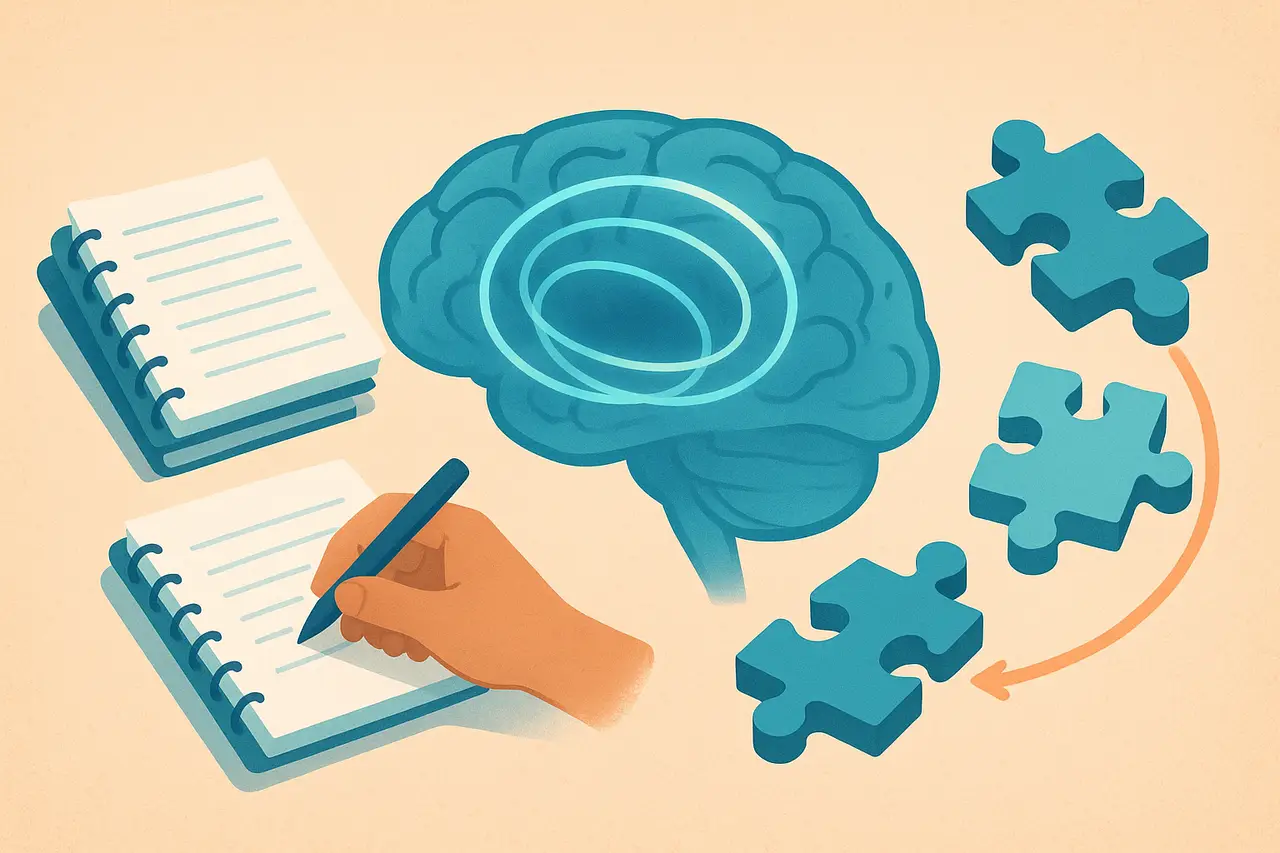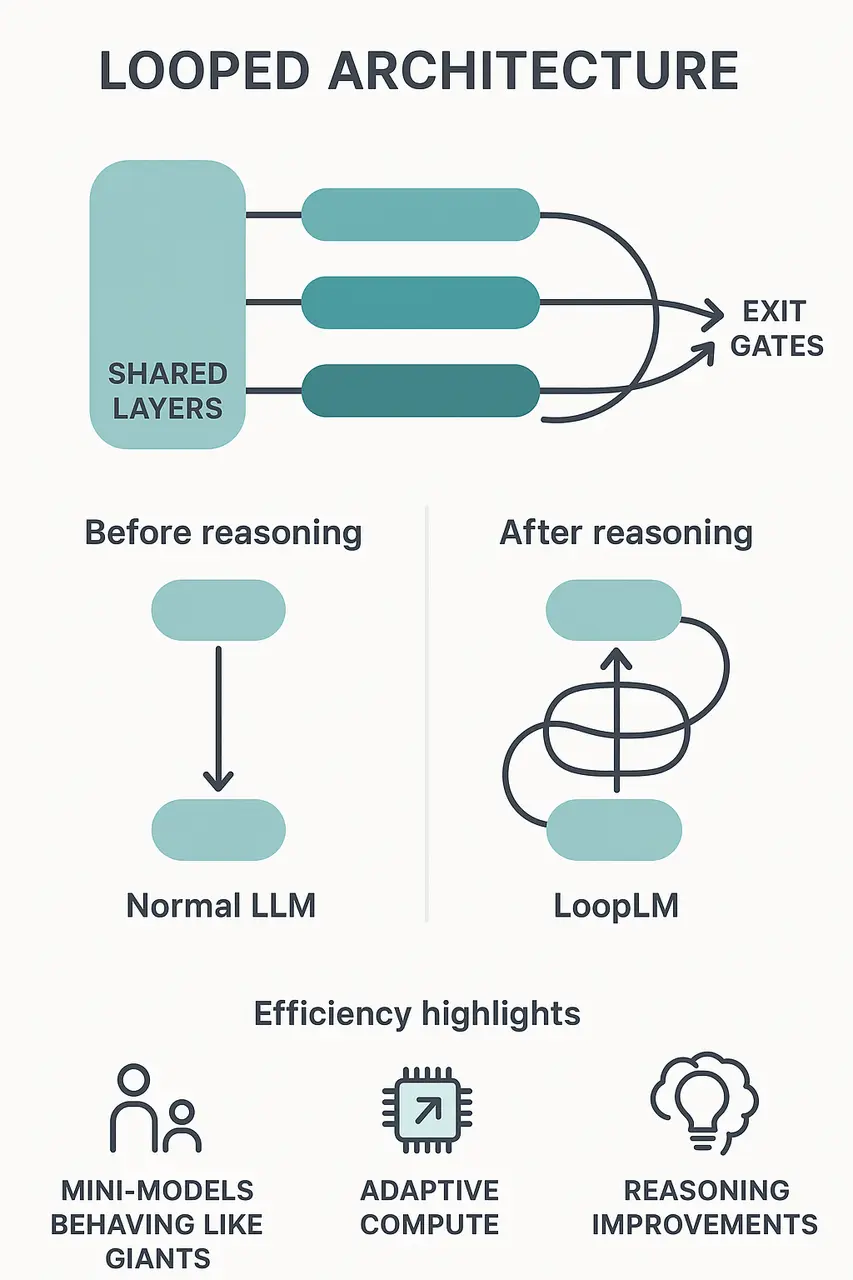In this article, we’ll dig into how LoopLM works, why it matters — and why, in the era of reasoning (not just regurgitation), this could be a major jump forward for LLMs.
LoopLLM: How Ouro Builds Reasoning Into Pre-training
LoopLLM: How Ouro Builds Reasoning Into Pre-training
We are as shocked as you are. We used to think that reasoning in LLMs meant adding long “chain‑of‑thought” prompts and hoping for the best. Yeah, good old times. Because now there’s a new way to teach models to think: train them to reason during their core learning, not after. Enter Scaling Latent Reasoning via Looped Language Models (LoopLM) — the paper that flips the script on what “pre‑training” can mean.
What’s the Big Idea
In standard LLMs, reasoning often becomes a post‑script: the model generates text, then tries to “explain” or “reason” its answer via a chain‑of‑thought. But what if reasoning was baked into the pre‑training phase? That’s what LoopLM is about.
- Iterate in latent space: the model loops over shared layers multiple times (rather than stacking ever more layers).
- Adaptive depth through early exit gating: simple queries take fewer loops, hard ones take more, all dynamically learned.
- Massive scaling: pre‑training on 7.7 trillion tokens, showing that smaller models (1.4B & 2.6B parameters) train to match larger ones (4B–12B) on reasoning tasks.

How It Works, Plainly
As if a student who doesn’t write an answer once but rewrites it several times in their notebook, improving each draft. LoopLM does the same—internally:
- Shared‑layer recurrence: instead of unique layers for each depth, the same block is reused through “loops.”
- Exit gate mechanism: at each loop step, the model evaluates “Have I done enough?” If yes, it stops; if not, it loops again. Simple questions: fewer loops, complex ones: more thinking.
- Entropy‑regularized training objective: ensures the model doesn’t always stop early or always keep looping, but learns the right balance of depth.
- Fine‑grained reasoning capability: Because of looping, the model manipulates knowledge rather than just storing it—it gets better at using facts, not simply knowing them.

Why It Matters
- Parameter‑efficiency: Mini‑models acting like giants. Ouro‑1.4B and 2.6B match or beat some 12B models on reasoning benchmarks.
- Better reasoning traces: Not just long text reasoning, but internal loops that align with final answer more faithfully—less “I know but here’s me explaining weirdly.”
- Adaptive compute: Faster on simple tasks, deeper on hard ones—efficiency and capability together.
- A new “depth”: Beyond “more parameters” or “more data,” now “more loops” becomes a lever.
What to Watch
This isn’t magic without caveats. Loop depth still needs calibration. Safety improves with more loops in some cases—but recall this doesn’t fix everything. And for deployment, supports like efficient inference stacks and adaptive gating must mature.

How Abaka AI Contributes
Abaka keeps the gears running behind the scenes—so your models don’t just function, they excel. They provide:
- Curated, ready‑to‑use datasets covering text, image, video, and even reasoning or agent‑based tasks—no more rebuilding the foundation from scratch. Instead of spending weeks gathering and labeling data, consider starting with a proven dataset that matches your domain.
- High‑accuracy annotation at scale, across 1 million+ specialist annotators, 50+ countries, for everything from simple labels to complex reasoning chains. If you have a custom task (reasoning chains, agent prompts, edge‑case scenarios), outsource it to our pipeline to save time and cost.
- End‑to‑end model support: data collection → annotation → training support → model evaluation, so your loop from concept to deployment shrinks.
- Strong ethics & compliance: GDPR/CCPA ready, full IP provenance, no copyright risk—your model’s foundation is legally solid.
Contact us if you are curious to learn more! Let's build the future together!

